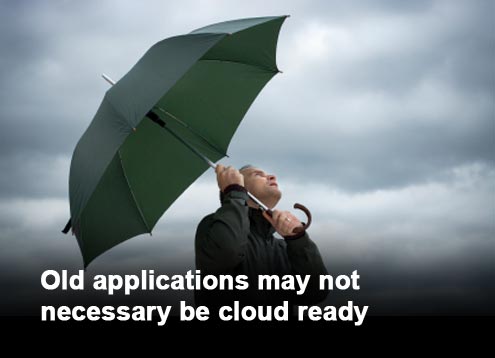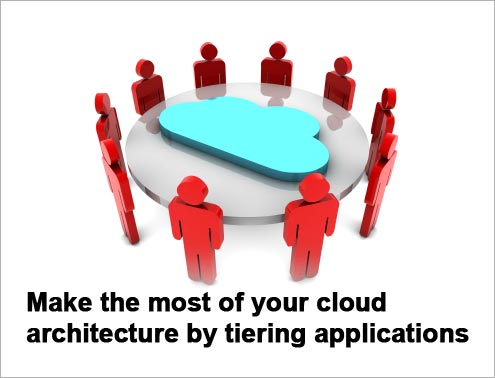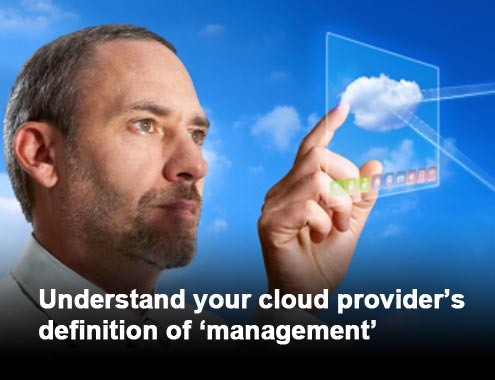
At the moment, there seems to be a lot of interest in building private clouds behind firewalls in the name of security. While that approach no doubt saves money by increasing server utilization, it still puts the burden for building the IT infrastructure on the customer’s capital budget. Given the simple fact that most companies are looking for ways to treat IT expenditures as an operating expense that can be easily scaled up or down, Janel Ryan, senior product marketing manager for SunGard Availability Services, a provider of cloud computing services, argues private clouds deployed on premise don’t address one of the primary reasons that businesses became so interested in cloud computing.
Ryan notes there is no reason why a private cloud computing environment can’t be deployed on public infrastructure, which more often than not is managed by a team of IT professionals who have a lot more security expertise than any internal IT organization is ever going to be able to muster. The internal IT organization in that scenario is still responsible for managing the overall environment, but the goals of private cloud computing can be achieved without requiring the business to make capital investments in IT infrastructure.
That doesn’t mean that every application can ideally run in the cloud. In fact, SunGard has come up with a list of key considerations for moving any application to the cloud. But confusion over fundamental financial issues, coupled with ignorance about the real state of security in the cloud, says Ryan, is causing a lot of IT organizations to make tactical decisions about cloud computing that ignore the real economics of cloud computing. By ignoring these issues, many IT executives may be putting their positions in jeopardy because, before long, the business is going to better understand the nuances of private cloud computing.
Cloud computing is a lot more than just the latest buzzword. It represents the emergence of a new computing model that has major business implications, which means the IT leaders of today need to come up with a cloud computing strategy that can realistically carry them and the business forward in the years ahead. And in many instances, that strategy is going to rely a lot more on services than building and maintaining internal IT infrastructure.
Click through for six factors you should consider when moving to the cloud, provided by Sungard Availability Services.
There’s a common misconception that with cloud, a company can just swap its current dedicated infrastructure for a server in the cloud. And it’s going to be cheaper, just as fast, and easier to provision. That’s not necessarily true because the applications that were written for dedicated infrastructures are not necessarily written for cloud architectures to support. A company can’t assume that cloud computing architectures are going to replace everything in the next few years. More than likely, in order to leverage legacy environments and support security and compliance needs, companies will have a combination of environments ranging from in-house, to dedicated hosting, to cloud. A company needs to understand what its workload looks like today and what the demands of that workload are in the future.
A company may have an application that needs to be available all the time because it’s accessed all the time — a system that costs an organization money every minute that it’s down. That’s why it is important to create a tiered approach around the level of availability that your business applications need. If a company has applications that don’t need to be always-on, it won’t need to pay as much for maintaining high availability in the cloud.
With a new application, a company will frequently have no idea how many resources it’s going to need to perform optimally in its cloud architecture. If it’s an old application, an organization often has no idea about what type of resources it will need in a cloud environment unless the organization has tested it. Companies may want to think about setting up test environments for new or existing applications in order to gain insight into application performance and whether they are cloud-ready.
Ultimately, your organization is responsible for your company’s data and business applications so you need to have an understanding of the responsibility matrix when it comes to using a cloud provider. Some service providers say they manage in the cloud but what does that mean, exactly? Are there additional fees associated with it? When they manage, are they monitoring the data 24/7? What are they monitoring? Do you get real-time performance metrics such as the state of your resources and their utilization? Is your provider doing troubleshooting and full trouble resolution? The right cloud management solution should provide complete visibility into the infrastructure with a central management dashboard through which companies can monitor performance and make capacity changes based on real-time needs.
Legislatures are tackling the issue of data privacy in different ways, making compliance in the cloud a difficult task for many companies. Organizations need to understand where their data will reside in the cloud, as well as who will interact with it and how. They also need to understand which areas of compliance the service provider controls and how to audit against the standards and regulations to which they need to adhere.
The number one concern about the cloud among cloud users across the board is security. The security protocol a business has in place today for its applications internally should not change just because it is thinking of moving to the cloud. If an organization has specific protocols and standards that must be followed and have been assigned to its business applications, the organization needs to think about and understand, from a cloud provider, how its data and security policies are still in place within that service provider’s infrastructure. Companies should check with potential service providers to understand how they segment/isolate customer data within a multi-tenant environment. Also understand where the firewalls are located within the cloud infrastructure and how the service provider controls access to the environment.









